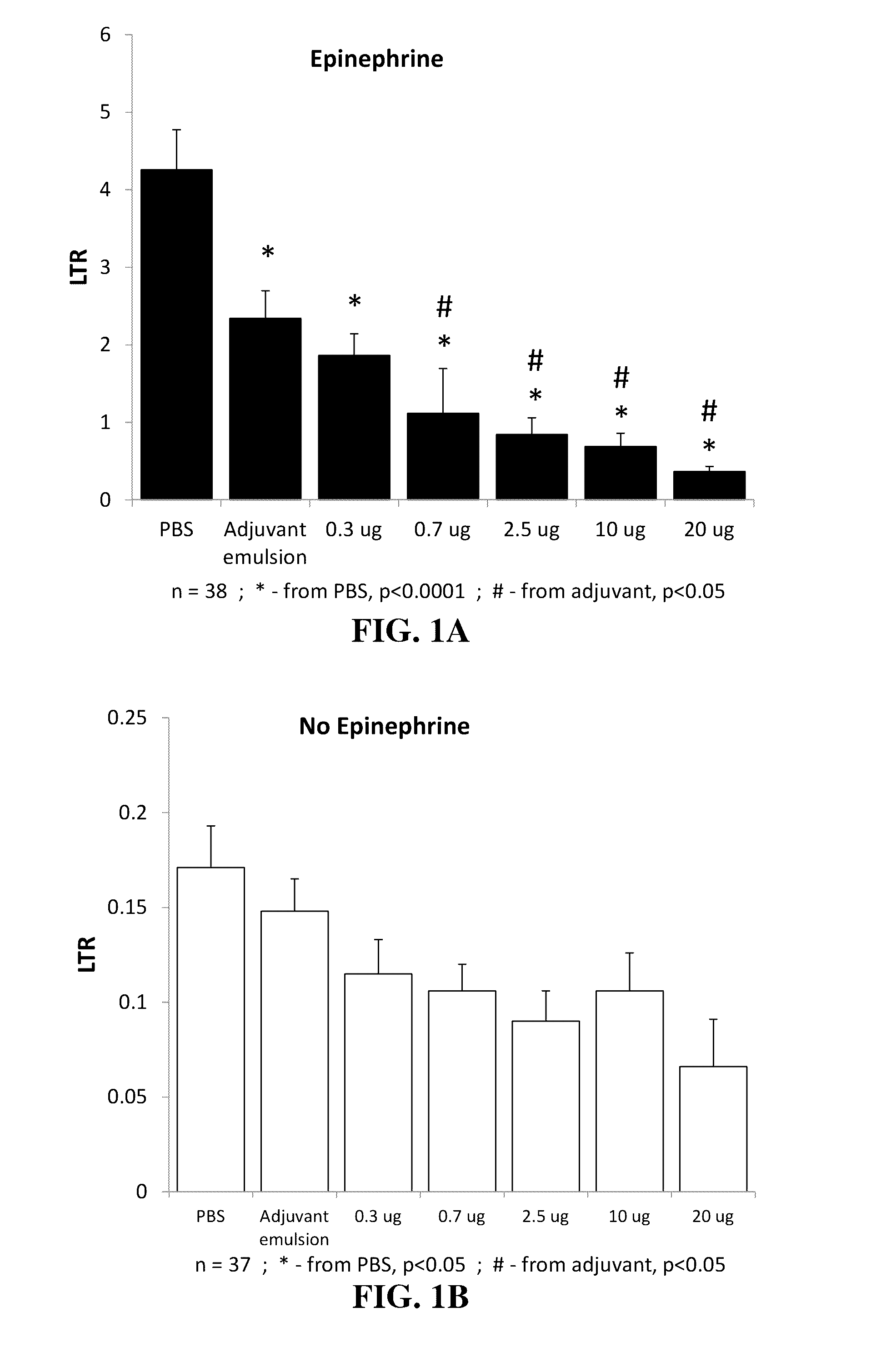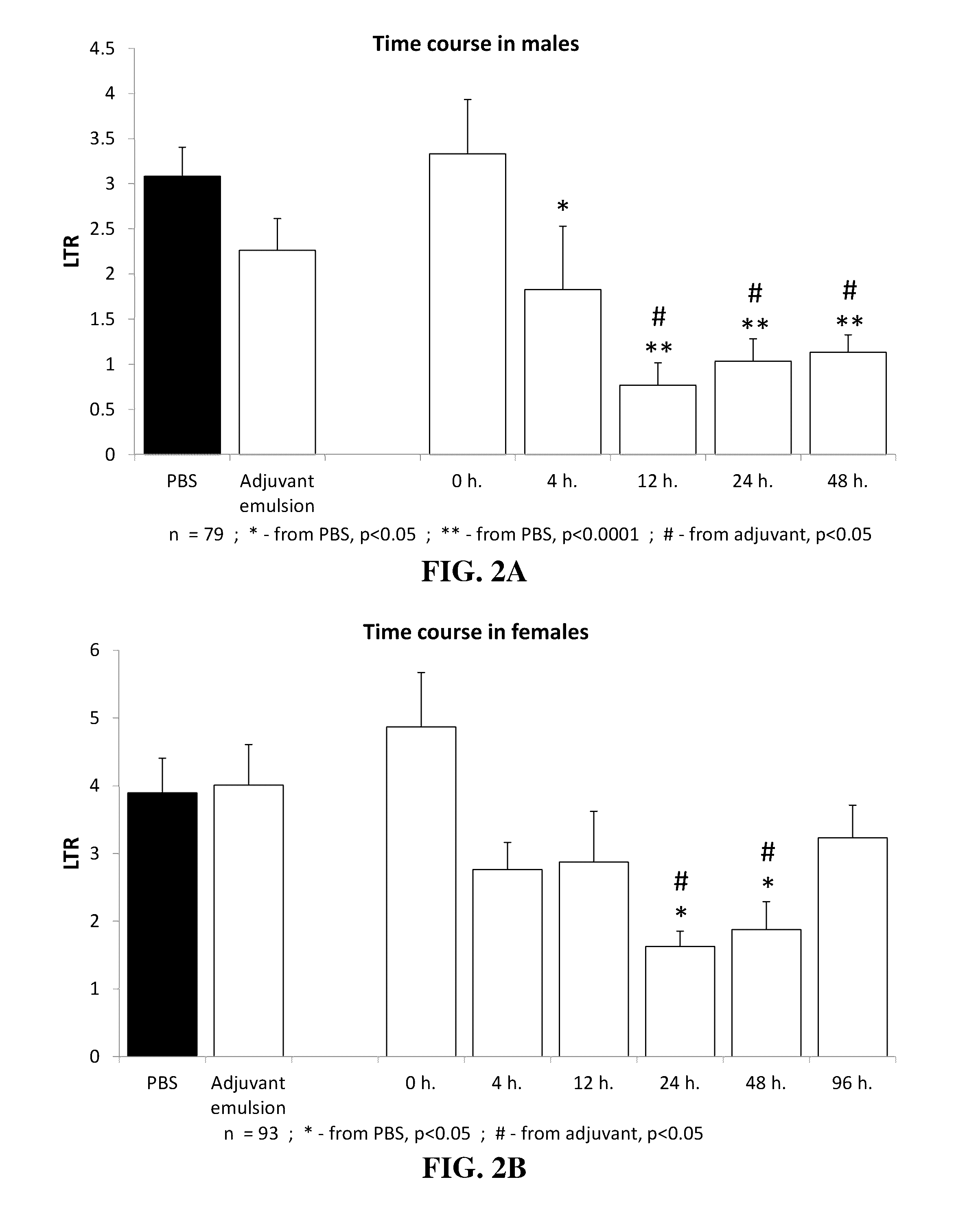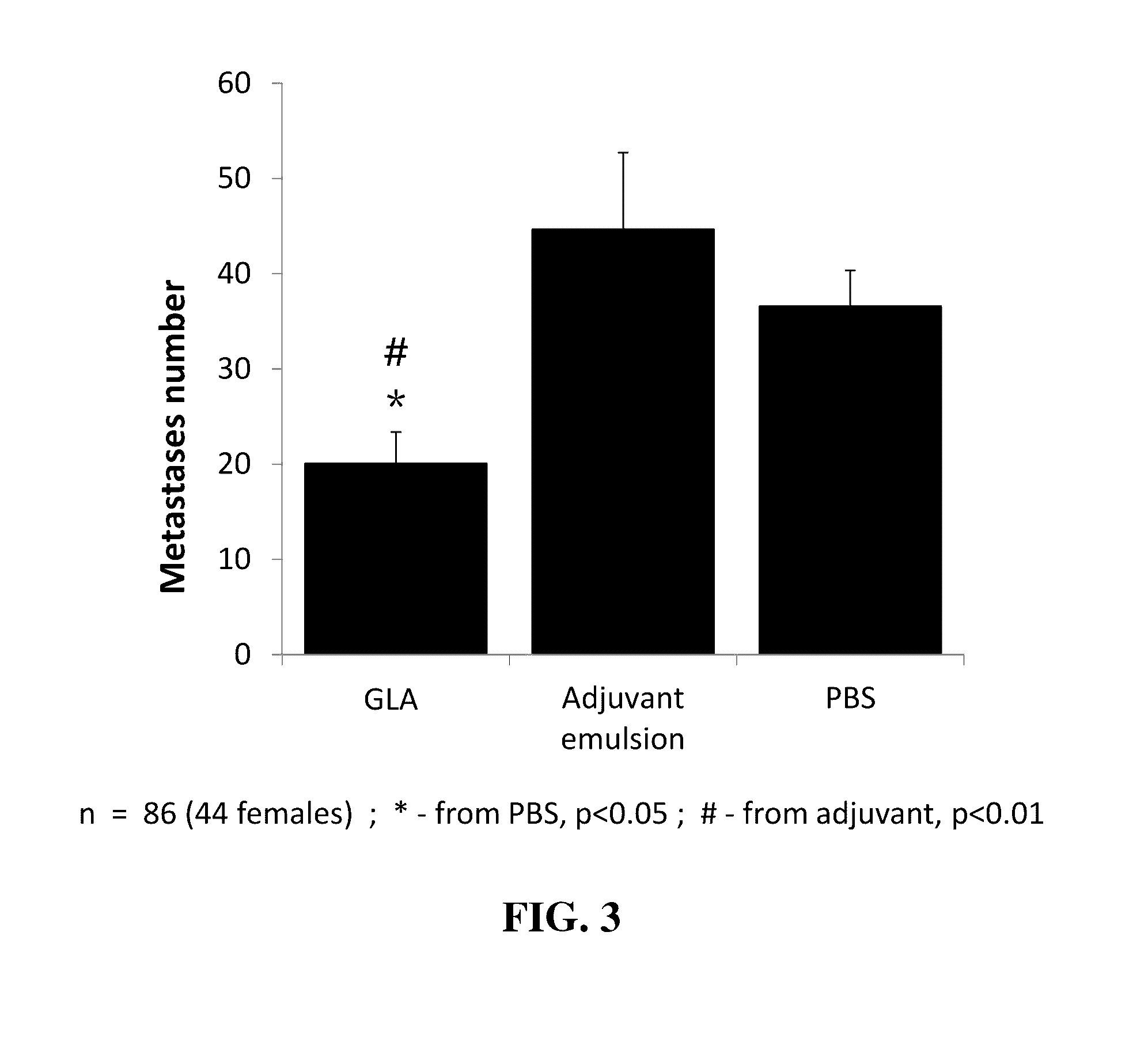Compositions and methods for reducing or preventing metastasis
a technology of metastasis and composition, applied in the direction of drug composition, biocide, animal husbandry, etc., can solve the problems of high risk of pre-existing micrometastases and the initiation of new metastases, the clinical study of cancer patients was, by-and-large, less successful, etc., to achieve effective inhibition of metastatic development, optimize the outcome of metastasis inhibition, and prevent metastasis
- Summary
- Abstract
- Description
- Claims
- Application Information
AI Technical Summary
Benefits of technology
Problems solved by technology
Method used
Image
Examples
example 1
Dose Curve of the Effects of GLA on MADB106 LTR in Male Rats
[0191]The experiment was conducted in order to establish a potent dosage for GLA administration for future experiments.
[0192]Procedure:
[0193]Seventy-five three months old F344 male rats were randomly divided into one of 7 experimental groups administered with PBS, SE, or GLA in a dose / animal of 0.3 μg, 0.7 μg, 2.5 μg, 10 μg, and 20 μg. Each animal was injected s.c. with 100 μl of drug according to its group assignment, and, 24 h later, MADB 106 cells were inoculated (as detailed in section 4 above). Each of these 7 groups was further sub-divided into two separate groups—one that was injected with epinephrine during tumor inoculation, and the second that was injected with vehicle. Twenty-four hours later, animals were sacrificed and lungs were extracted for LTR assessment (as detailed in section 4).
[0194]Results:
[0195]Significant main effects for treatment (SE, and GLA dose) on LTR were evident both in the epinephrine groups...
example 2
Time Course for Initiation and Duration of GLA Effects
[0200]The experiment was conducted in order to determine the duration of effect for GLA administration, and for assessing an optimal time point for its use.
[0201]Procedure:
[0202]In the first experiment, 75 six-month old F344 male rats were randomly divided into one of 5 injection time points preceding tumor inoculation—0 h, 4 h, 12 h, 24 h, and 48 h. Each group was further sub-divided into one of three experimental drug groups—PBS, SE, and 2 μg GLA. Each animal was injected s.c. with 100 μl according to its relevant drug group, in its designated time point. At time 0 h, MADB106 cells were injected (as detailed in section 4), along with epinephrine. Four additional male F344 rats were added to the PBS group and were not injected with epinephrine (received vehicle), to serve as an anchor to establish the effects of epinephrine. Twenty-four hours later, animals were sacrificed and lungs were extracted for LTR assessment (as detailed...
example 3
A Three Week Study for the Assessment of GLA Effects on the Actual Development of MADB106 Metastases in the Lungs
[0209]This experiment was conducted in order to assess in vivo effects of GLA on the actual development of cancer metastases in the lungs, rather than focusing on the shorter index of LTR.
[0210]Procedure:
[0211]Eighty-six six-month old F344 rats (44 females) were divided into three experimental groups (2 μg GLA, SE, and PBS). Each animal was injected s.c. with 100 μl according to its group assignment. Twenty-four hrs later, animals were lightly anesthetized with isoflurane and 105 MADB 106 tumor cells (approximately 4×105 / kg) were injected into their tail vein in 0.5 ml of PBS (supplemented with 0.1% BSA). Three weeks later, rats were killed, and their lungs removed and placed for 24 h in Bouin's solution (72% saturated picric acid solution, 23% formaldehyde (37% solution) and 5% glacial acetic acid). After being washed in ethanol, visible surface metastases were counted b...
PUM
| Property | Measurement | Unit |
|---|---|---|
| diameter | aaaaa | aaaaa |
| diameter | aaaaa | aaaaa |
| diameter | aaaaa | aaaaa |
Abstract
Description
Claims
Application Information
 Login to View More
Login to View More - R&D
- Intellectual Property
- Life Sciences
- Materials
- Tech Scout
- Unparalleled Data Quality
- Higher Quality Content
- 60% Fewer Hallucinations
Browse by: Latest US Patents, China's latest patents, Technical Efficacy Thesaurus, Application Domain, Technology Topic, Popular Technical Reports.
© 2025 PatSnap. All rights reserved.Legal|Privacy policy|Modern Slavery Act Transparency Statement|Sitemap|About US| Contact US: help@patsnap.com



